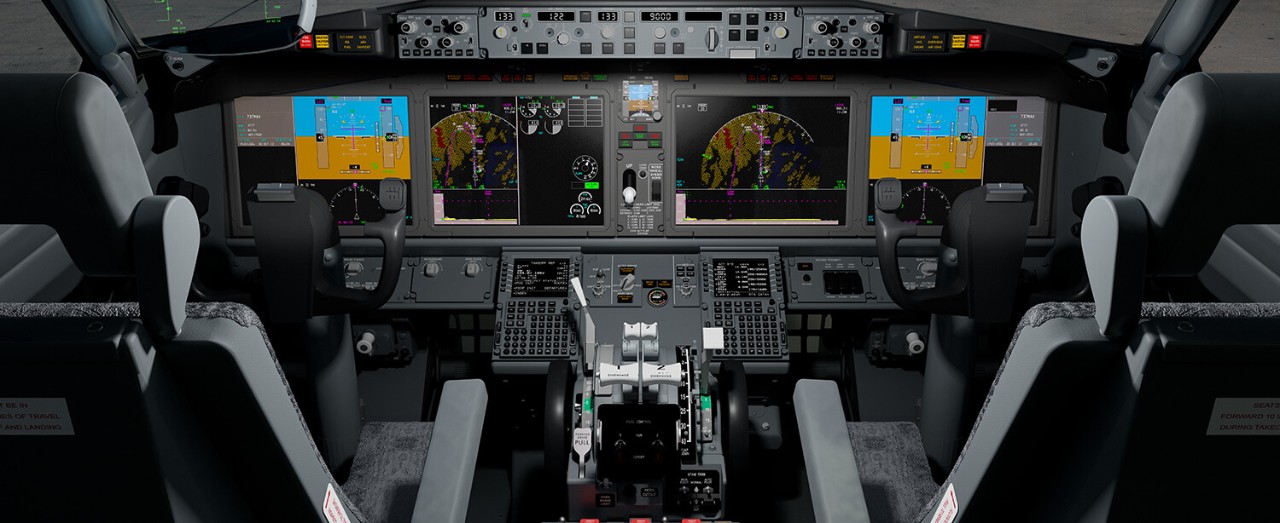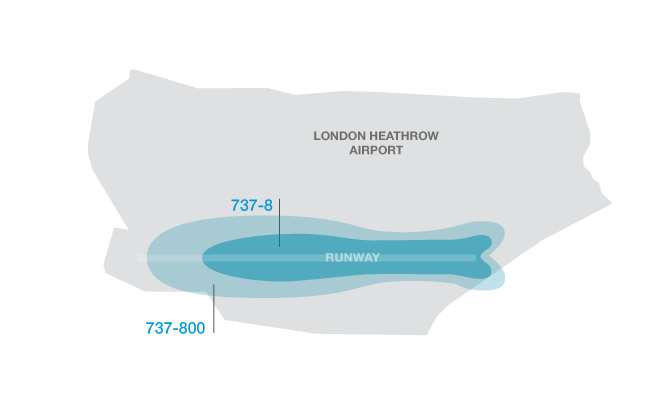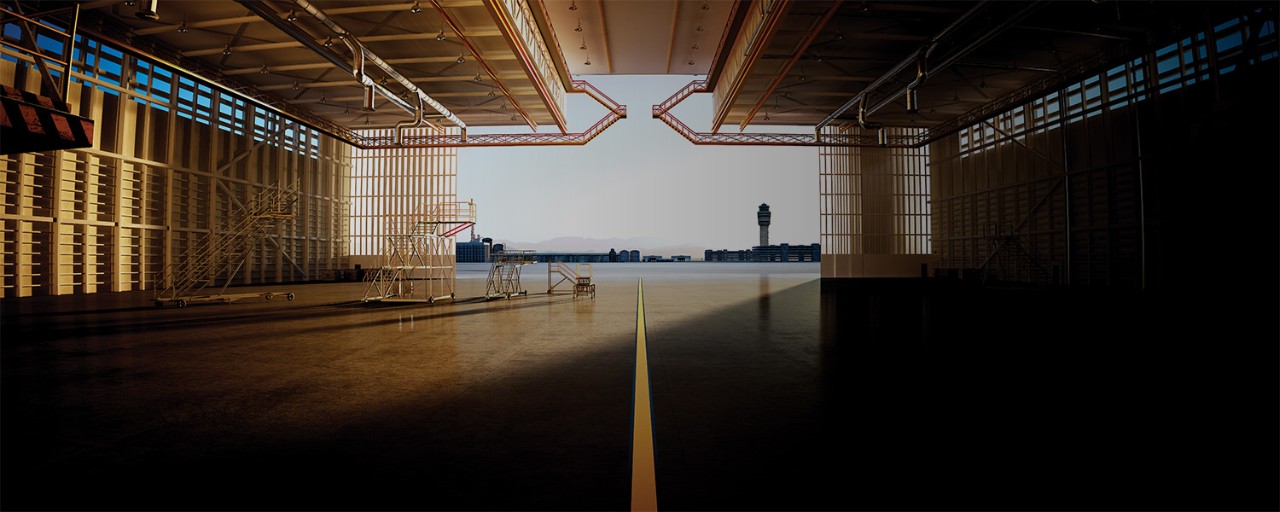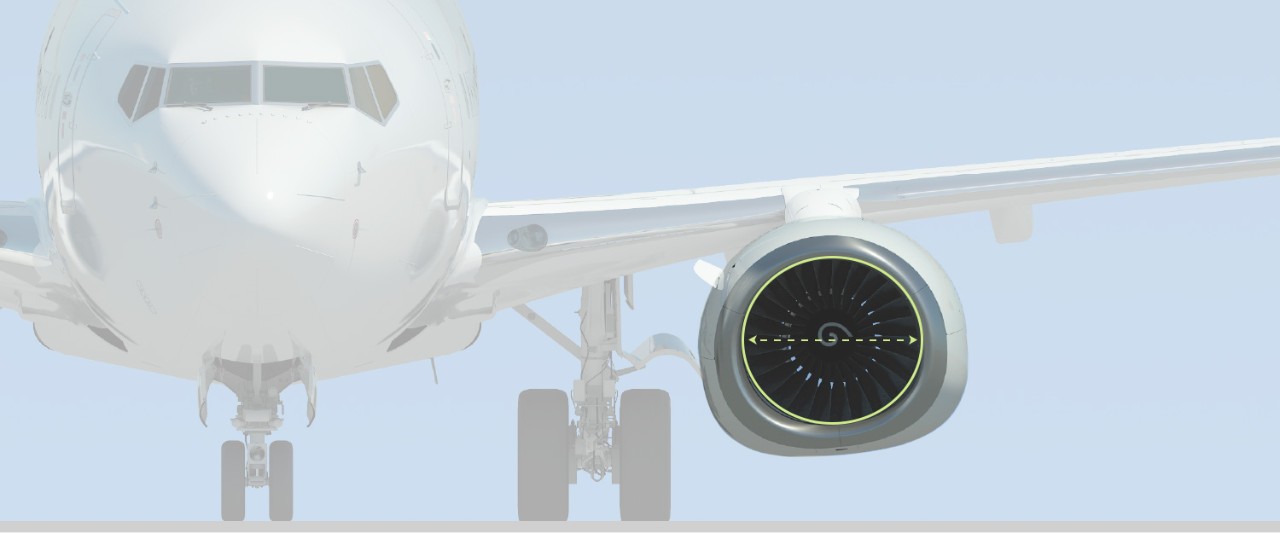20% reduction in CO2 and fuel use*
737 MAX Family
The most-efficient single-aisle airplane family delivers greater passenger comfort, excellent economics and improved environmental performance

737 MAX Advanced Flight Deck
The 737 MAX flight deck features four large 15-inch displays, which are the same size as the 787 Dreamliner and 777X.

Fly Quietly
London Heathrow Airport
- 50% smaller noise footprint
- 85 dBA noise contours
- London Heathrow Airport RWY 27L
Maximum thrust engines with cutback
NADP 1 (ICAO-A)
85-dBA Takeoff noise contours
500-nmi mission, Full passenger payload
737-800 with optional winglets

Enjoy an Elevated Experience in the Boeing Sky Interior
- Larger pivoting bins with easy-to-open latches
- Advanced LED lighting throughout the cabin
- Bigger windows, more than 20 percent larger than the competition
- Spacious architecture

Inspiring Journeys
Customizable lighting schemes, such as the sunrise and sunset settings, offer airlines an opportunity to create different moods within the cabin.

The 737 MAX Spends Less Time in the Hangar
A320
- Less reliable
- More days out of service
- More frequent checks
- More man hours per check

LEAP-1B: 737 MAX vs Next-Generation 737
- 737 MAX
- Next-Generation 737
LEAP-1B: 69-inch fan
A key driver of 737 MAX fuel savings is the new CFM LEAP-1B engine. The engine is designed for the rigors of single-aisle operations and tailor-made for the 737 MAX.

CFM56-7: 61-inch fan
A key driver of 737 MAX fuel savings is the new CFM LEAP-1B engine. The engine is designed for the rigors of single-aisle operations and tailor-made for the 737 MAX.

Easy to Operate
Airlines ask for an airplane that fits smoothly in today's fleet
Because of the 737’s popularity with airlines everywhere around the world, integrating the new 737 MAX is an easy proposition. As you build your 737 MAX fleet, millions of dollars will be saved because of its commonality with the Next-Generation 737, ease of maintenance, wide availability of 737 pilots, and the global infrastructure that supports the aircraft in operation.

Advanced Technology Winglet Saves More Fuel

Advanced technology winglets are the most efficient ever designed for a production airplane, because of the combination of advanced design and manufacturing techniques allowing for natural laminar flow. The winglets reduce fuel burn by approximately 2 percent.
Greater Range in the Single-Aisle Market

The Lowest Maintenance Costs
Up to 14% lower airframe maintenance than the A320neo

Cleaner, Quieter, and More Efficient
Currently meets CAEP/8 limits for NOx
50% smaller community noise footprint*

*Compared to Next-Generation 737
Characteristics
- 737-7
- 737-8
- 737-9
- 737-10

153 Passengers
2-Class Configuration
172 Passengers
Maximum Seating
35.9 M / 117 ft 10 in
WINGSPAN
35.6 M / 116 ft 8 in
LENGTH
12.3 M / 40 ft 4 in
HEIGHT
3,800 nmi / 7,040 km
RANGE

178 Passengers
2-Class Seating
210 Passengers
Maximum Seating*
*737-8-200 with additional mid cabin exit
35.9 M / 117 ft 10 in
WINGSPAN
39.5 M / 129 ft 8 in
LENGTH
12.3 M / 40 ft 4 in
HEIGHT
3,500 nmi / 6,480 km
RANGE

193 Passengers
2-Class Seating
220 Passengers
Maximum Seating
35.9 M / 117 ft 10 in
WINGSPAN
42.2 M / 138 ft 4 in
LENGTH
12.3 M / 40 ft 4 in
HEIGHT
3,300 nmi / 6,110 km
RANGE

204 Passengers
2-Class Seating
230 Passengers
Maximum Seating
35.9 M / 117 ft 10 in
WINGSPAN
43.8 M / 143 ft 8 in
LENGTH
12.3 M / 40 ft 4 in
HEIGHT
3,100 nmi / 5,740 km
RANGE
